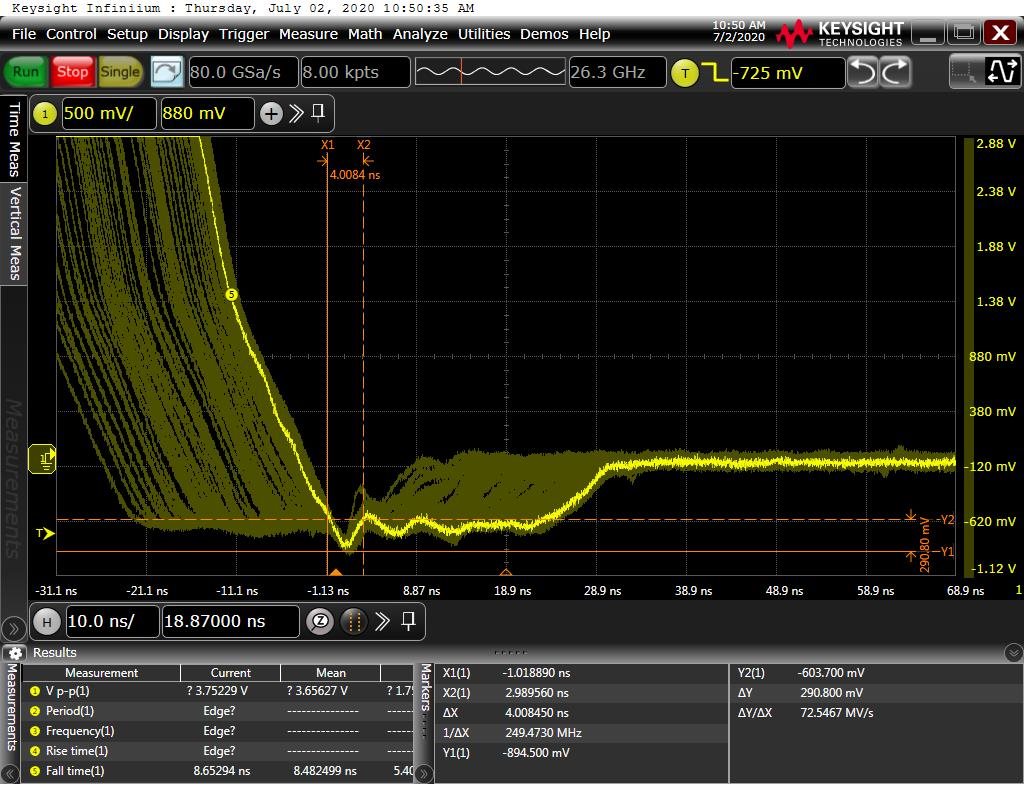HI TEAM,
My customer is using the TPS54610 now. When we test the PH waveform, we find two information want to check with you.
From the datasheet, the DC negative voltage is -0.6v, the 10ns negative voltage is -2v(whether it means the device can survive from -2v 10ns?)
1. whether the negative voltage has risks?(From my opinion, it's ok)
2. you can see the internal body diode voltage drop is above -0.6v which is the DC AB MAX value. Not sure whether we can change the AB max table based on the real internal body diode voltage drop? Or how we can judge and give the -0.6 here?





